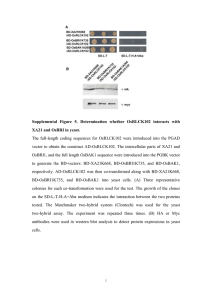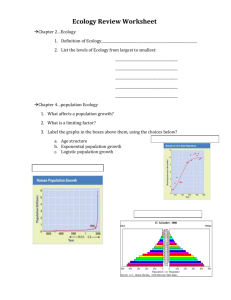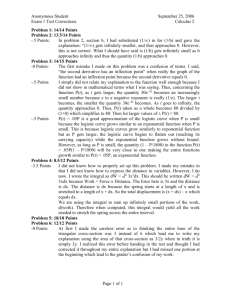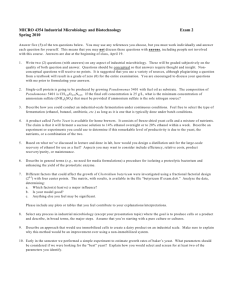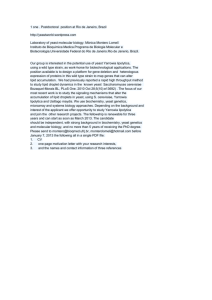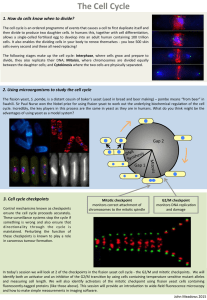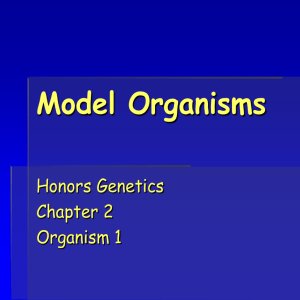Yeast Data Table
advertisement
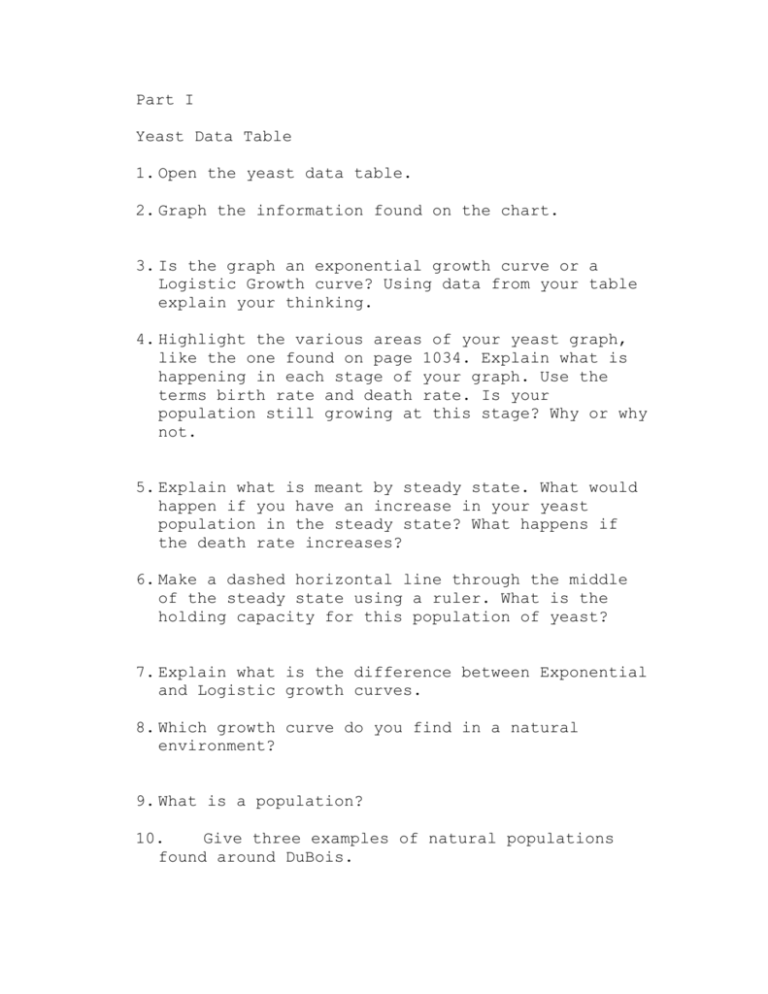
Part I Yeast Data Table 1. Open the yeast data table. 2. Graph the information found on the chart. 3. Is the graph an exponential growth curve or a Logistic Growth curve? Using data from your table explain your thinking. 4. Highlight the various areas of your yeast graph, like the one found on page 1034. Explain what is happening in each stage of your graph. Use the terms birth rate and death rate. Is your population still growing at this stage? Why or why not. 5. Explain what is meant by steady state. What would happen if you have an increase in your yeast population in the steady state? What happens if the death rate increases? 6. Make a dashed horizontal line through the middle of the steady state using a ruler. What is the holding capacity for this population of yeast? 7. Explain what is the difference between Exponential and Logistic growth curves. 8. Which growth curve do you find in a natural environment? 9. What is a population? 10. Give three examples of natural populations found around DuBois. Part 2 Human population: Log onto the laptops and answer the following questions about the human population. 1. In figure 1, What age is shown for the beginning population on the graph? How many years ago? 2. In figure 1, what age did the human population enter exponential growth? 3. What phase of the Logistic Growth curve are we in? 4. What do you think will happen to the human population in the future if growth continues as shown on the graph. Think about what you learned in the Yeast example above. 5. In figure 2, what countries are having the highest fertility rates? What does fertility mean? 6. What countries have the lowest fertility rates? 7. What is the fertility rate for the United States? 8. In figure 3, what is a general description of what you see in the graph? 9. In figure 7, where would one find the projected greatest increase in the human population? 10. What is the estimated carrying capacity of the biosphere for humans? http://www.globalchange.umich.edu/globalchange2/current /lectures/human_pop/human_pop.html

